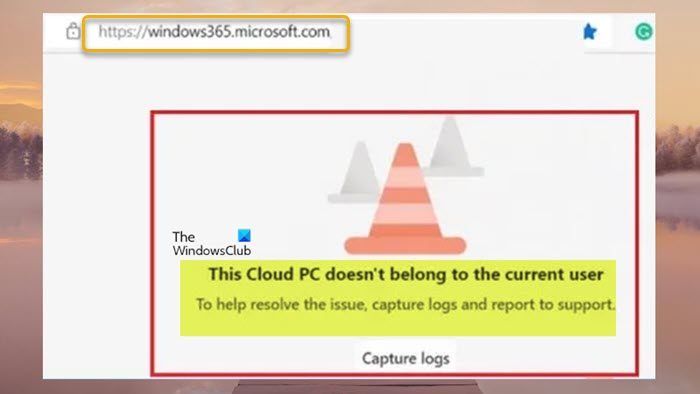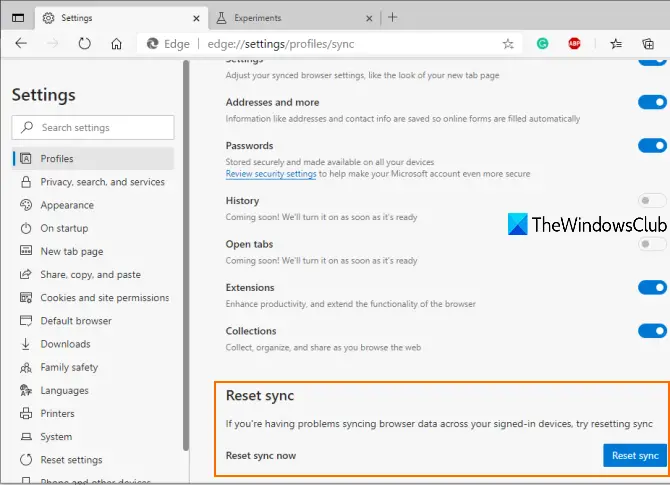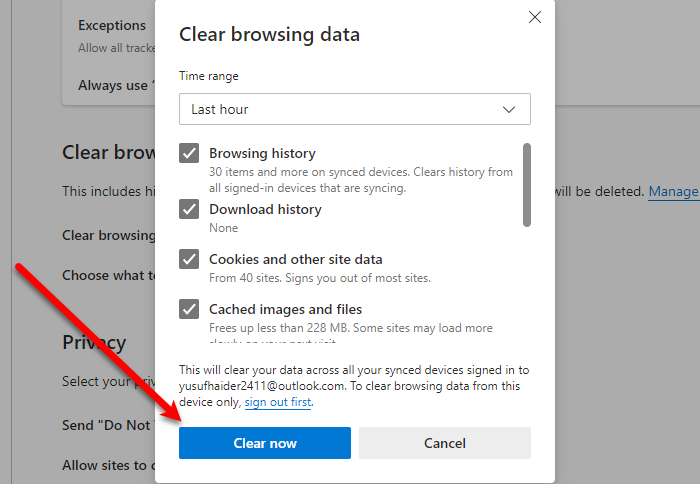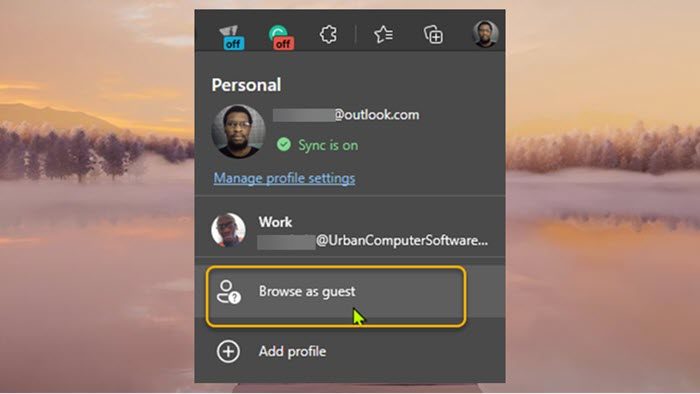The error message This Cloud PC doesn’t belong to the current user may be displayed when a user tries to log into the Cloud PC via the web client at windows365.microsoft.com using the Microsoft Edge browser. This post offers practical remediation to the issue.

When this issue occurs, the following full error message is displayed:
This Cloud PC doesn’t belong to the current user
To help resolve the issue, capture logs and report to support.
As per the instruction to capture logs for troubleshooting, when the user clicks on Capture logs, the Edge browser will show that the Windows 365 Web Client Logs have been downloaded. However, if the Cloud PC user opens that log file in Notepad, the text document is empty, and there are no data in the file, which, when downloaded, is 0KB in size. The reason is that an end-user will be unable to collect any Cloud PC logs because the log capture option appears only when the user is logged into the Cloud PC. Otherwise, end users can collect Cloud PC logs from Windows 365 Web Client by following the steps below. The logs are collected from the browser, and the user can choose the save location or the file will automatically be saved to the Download location on the Edge browser.
- From the Web Client (windows365.microsoft.com), select the gear icon.
- Click on the Capture logs button at the bottom of the menu.
This Cloud PC doesn’t belong to the current user
If you get the This Cloud PC doesn’t belong to the current user error message when trying to log into a Cloud PC on the Windows 365 portal using the Edge browser, then you can apply the fixes presented below in no particular order to resolve the issue without or with less hassle.
- Use the Remote Desktop client to log into the Cloud PC
- Reset sync in Edge
- Clear the Edge browser cache
- Use the Browse as Guest option in Edge
- Use another web browser
Let’s look at the description of the process as it relates to each of the listed solutions.
1] Use the Remote Desktop client to log into the Cloud PC
The same Remote Desktop Client (RD Client) is used for end-user connectivity or launching Windows 365 Cloud PCs. So, since you’re having issues logging into the Cloud PC via the web client and receiving the message This Cloud PC doesn’t belong to the current user, then you can see if logging in with the RD client will be successful without the error message.
The RD Client is available for download from the following direct links depending on system architecture:
Windows 64-bit | Windows 32-bit | Windows ARM64.
Once downloaded, run (admin access is required if you install it manually) the MSI Remote Desktop_***.msi package. After the installation, you will need to subscribe to the AVD feed by following these steps:
- Clicking on the Subscribe button.
- Sign in with your user ID with cloud UPN (@NameOfDomain.com).
- Click Next.
Once successfully signed in with your user ID, you will be able to see host pools and remote apps assigned to your user.
- Now, right-click on the Host Pool icon to change the display settings (the default setting is FULL Screen).
- Click on Settings.
- Select the following DISPLAY options per your requirement:
- User Default Settings = Off
- Display Settings = Off
- Start in full screen = Off
- Update the resolution on resize = Yes
- Resolution = 200%
- Fit session to Windows = On
- When done, exit and double-click on the Host Pool icon to launch the Remote Desktop.
- Enter the password.
- Click OK > OK and the Remote Desktop will get connected.
The new versions of Windows RD Client for AVD are automatically updated. If you want to check the version of the AVD RD Application, click on the ellipsis (…). Under the About section, click the Check for updates button to check whether there is any update.
Read: Remote session was disconnected. No Remote Desktop client access licenses are available
2] Reset sync in Edge

in an Azure Active Directory (Azure AD) environment, it’s important to understand that there’s a difference between identity issues and sync issues. A popular use case for maintaining user identity in the browser is to support sync – and this is why identity issues are frequently confused with sync issues. Having said that, the issue of the user being unable to log into the Cloud PC could be that the user identity and browser data are not syncing properly. In this case, if a user is experiencing an issue syncing browser data across their devices, they can reset sync in Edge via Settings > Profiles > Sync > Reset sync. Before performing a reset, you must sign out of Microsoft Edge on all your other devices.
3] Clear the Edge browser cache

A corrupted Edge browser cache could be the culprit to the issue. So, to rule out this possibility, you can clear the browser cache in Edge and then try to log into the Cloud PC again. If the issue persists, proceed with the next suggestion.
Read: Clear Cookies, Site Data, Cache for specific website in Chrome, Edge, Firefox
4] Use the Browse as Guest option in Edge

It could be that issue is tied to the Profile in use on the Edge browser. In this case, to troubleshoot, you can use the Browse as guest option (Guest Profile) or any other user profile in Edge other than the previous profile. You can automatically switch Profiles for specific sites (in this case, windows365.microsoft.com) in Edge.
5] Use another web browser
The modern browser’s user profiles and caching technologies could create issues with SaaS services such as Cloud PC. However, since the problem occurs while using Edge and even after exhausting the suggestions provided above, the issue is still unresolved, then you can try using another browser like Google Chrome to sign in to the Cloud PC on the Windows 365 portal.
I hope this helps!
Read next: Webcam redirection not working in Windows 365 Cloud PC
Where is my Windows 365 Enterprise Cloud PC?
Cloud PC users can log into the Windows 365 home page to see the Cloud PCs they have access to in the Your Cloud PCs section. Users that can log in successfully on the portal can select Open in browser or Open in Remote Desktop app to launch and access their Cloud PC. If you are unable to launch the Cloud PC in the browser and get the This Cloud PC doesn’t belong to the current user error message, then the suggestions offered in above in this post should help resolve the issue.
What are the limitations of Windows 365 Cloud PC?
For starters, Windows 365 Cloud PC is online-based. The obvious drawback of a Windows Cloud PC is that you can only use it online – you won’t have access to any data, files, or programs if you don’t have an internet connection. Microsoft has addressed this issue by introducing the Windows 365 Offline feature — this enables users to work in Windows 365 even when they are not connected to the Internet. The Cloud PC automatically resyncs with the service once connectivity is restored ensuring a convenient and dependable working environment.